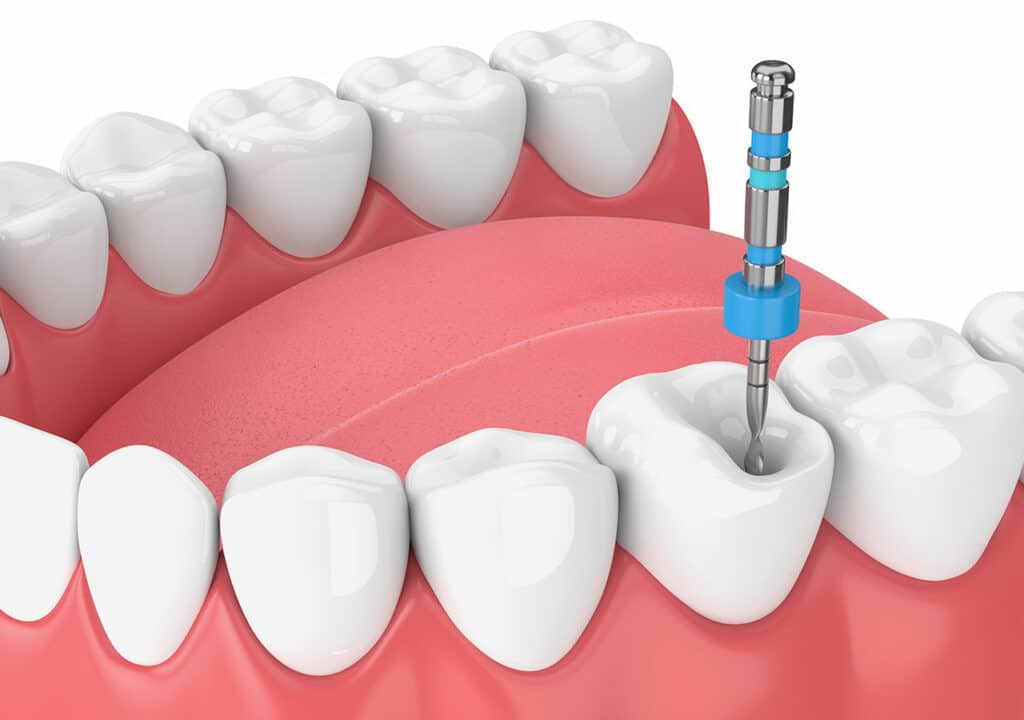Root canal treatment
Root Canal Treatment
Other symptoms of a damaged pulp include:
- Dull ache or intense throbbing toothache
- Lingering sensitivity to heat and cold
- Pain or tenderness when chewing
- Tooth discolouration
- Unpleasant taste in your mouth
- Bad breath
If you neglect a dental pulp infection, the result can lead to a dental abscess.
This happens when the toxins from oral bacteria destroy the bone around the tooth. If the abscess is left untreated, the infection can spread causing other serious health issues. The causative ‘dead’ tooth will eventually break down whilst becoming more and more discoloured in the process.
Your comfort is our priority at Blue Gum Dental.
If required, your dentist will provide you with an anaesthetic to numb the tooth and the area around it.
For anyone that has sensitive teeth and gums, your dentist may numb the area with a topical solution to further increase comfort. Many patients don’t feel any pain at all.
Once you are comfortable, your dentist will begin treating the tooth decay, and repairing the tooth. The cavity is carefully cleaned, disinfected, dried, and then repair with a filling.
The treatment for diseased dental pulp is a Root Canal Treatment.
- Your dentist will take x-rays to assess the extent of damage.
- Your dentist will then anaesthetise your tooth to make the process as comfortable as possible.
- An antibacterial solution is used to flush out and clean any remaining bacteria from within the tooth.
- An antibacterial dressing is placed inside the tooth and a temporary filling over the top to prevent further introduction of bacteria.
- Once your roots are free from disease and debris, leaving clear canals for the dentist to fill, they will bond the canal’s walls with a sealant.
To complete the process, a crown may be recommended to protect the tooth from further damage, and a restoration goes over the top of the tooth until the crown can be fitted at a later date.
RCT can take between one to three appointments to complete and is determined by the severity of the decay.
Over the counter pain relief such as paracetamol or ibuprofen can be used manage any discomfort you feel after the treatment.
Avoiding hard or chewy foods is recommended for the first few days.
A root canal treatment can last for many years. Practicing good oral hygiene combined with regular dentist visits ensure your root canal treatment will last and remain pain free, for as long as possible.

